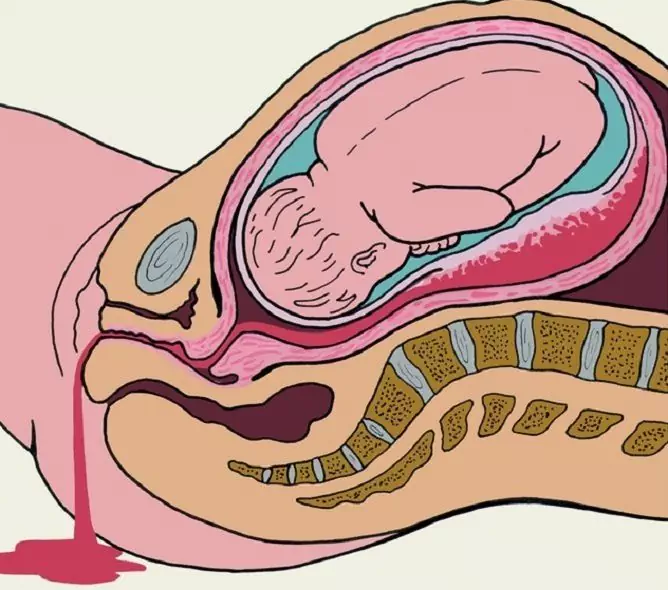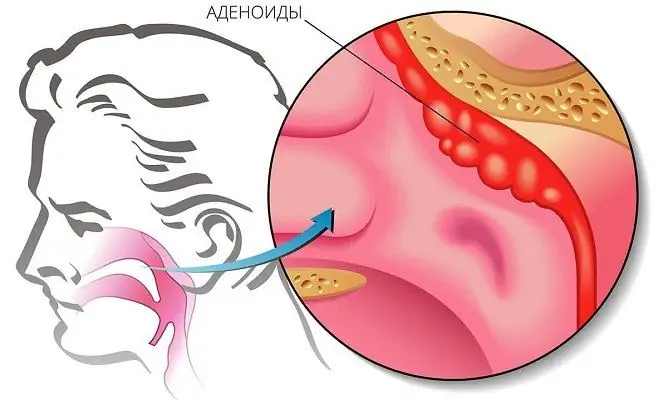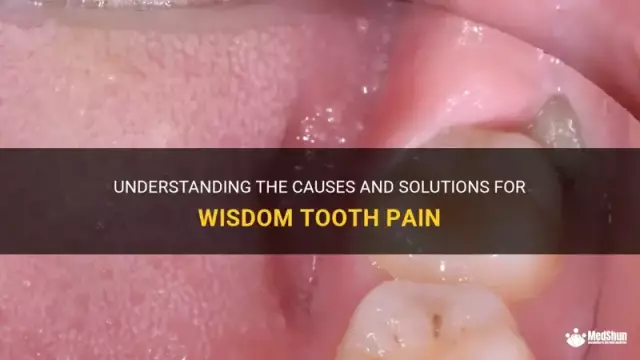- Author Rachel Wainwright [email protected].
- Public 2023-12-15 07:39.
- Last modified 2025-11-02 20:14.
Optic nerve atrophy
General characteristics of the disease

Atrophy of the optic nerve is a serious ophthalmic disease with a significant decrease in the patient's visual function. Atrophy of the optic nerve can be provoked by inflammation or degeneration of the optic nerve, compression or trauma, leading to damage to the nerve tissue.
The causes of optic nerve atrophy of neurological, infectious, phlebological etiology include brain tumors, meningitis, hypertension, profuse bleeding, atherosclerosis and other diseases. The destruction of the nerve fibers of the optic nerve can also be caused by genetic factors or intoxication of the body.
In the process of development of optic nerve atrophy, the destruction of nerve fibers gradually occurs, their replacement with connective and glial tissue, and then the blockage of the vessels responsible for the blood supply to the optic nerve. As a result, the patient's visual acuity decreases and the optic nerve head becomes pale.
Symptoms of optic nerve atrophy
Symptoms of optic atrophy depend on the form of the disease. A sign of primary atrophy of the optic nerve, as an independent disease, is the clear boundaries of a pale disc. This disrupts the normal excavation (deepening) of the disc. With primary atrophy of the optic nerve, it takes the form of a saucer with narrowed retinal arterial vessels.
Symptoms of optic nerve atrophy of the secondary form include blurred disc boundaries, vasodilation, prominence (bulging) of its central part. However, it should be taken into account that at the late stage of secondary atrophy of the optic nerve, there are no symptoms: the vessels narrow, the boundaries of the disc are smoothed, the disc is flattened.
Hereditary atrophy of the optic nerve, for example, in Leber's disease, manifests itself as retrobulbar neuritis. This is the name of the inflammation of the part of the optic nerve located behind the eyeball. At the same time, visual acuity decreases gradually, but there is soreness during eye movements.
A symptom of optic nerve atrophy against the background of profuse bleeding (uterine or gastrointestinal) is a sharp narrowing of the retinal vessels and the loss of its lower half from the field of view.
Symptoms of optic nerve atrophy when compressed by a tumor or from trauma depend on the location of the damage to the optic disc. Often, even with the most serious injuries, the quality of vision decreases gradually.
Partial atrophy of the optic nerve is characterized by the least functional and organic changes. The term "partial atrophy of the optic nerve" means that the destructive process began, affected only part of the optic nerve and stopped. Symptoms of partial atrophy of the optic nerve can be very different and have different severity. For example, narrowing of the field of vision up to the tunnel syndrome, the presence of cattle (blind spots), decreased visual acuity.
Diagnosis of optic nerve atrophy
With a significant blanching of the optic nerve, the diagnosis of the disease is simple. Otherwise, a more detailed study of the patient's visual functions is required using tests to determine the field of vision, X-ray and fluorescent angiographic studies.
Atrophy of the optic nerve is also indicated by a change in the electrical physiological sensitivity of the optic nerve and an increase in intraocular pressure in cases of glaucomatous disease.
Treatment of optic nerve atrophy
The most favorable prognosis in the treatment of partial optic nerve atrophy. The main standard in the treatment of the disease is the use of drugs to improve the blood supply to the optic nerve, vitamins and physiotherapy.
If the decrease in visual acuity is caused by squeezing, the treatment of optic nerve atrophy is primarily neurosurgical, and only then methods of magnetic and laser stimulation, electro- and physiotherapy are used.
The main goal of treating optic nerve atrophy is to stop the destruction of optic nerve tissue and preserve the existing visual acuity. It is usually impossible to completely restore visual function. But without treatment, atrophy of the optic nerve can lead to complete blindness of the patient.
Optic atrophy in children

Many congenital eye diseases are diagnosed in a child at the first examination in the hospital: glaucoma, cataracts, ptosis of the upper eyelid, etc. Unfortunately, atrophy of the optic nerve in children is not one of them, since its course is often latent, without external visible symptoms of the disease. Therefore, the diagnosis of complete lesion of the optic nerve or partial atrophy of the optic nerve in children is usually established in the second month of the child's life during a routine examination by an ophthalmologist.
The doctor checks the newborn's visual acuity, the quality of gaze fixation and the ability to follow the child with a moving toy. The field of view of the baby is determined in the same way. If it is not possible to find out visual acuity in this way, then a study of the reaction of the brain to visual stimuli is used.
With the help of ophthalmic equipment and drugs that dilate the pupil, the fundus of the baby is studied. When a clouded optic disc is found, a diagnosis of optic nerve atrophy is made. In children, the treatment of the disease is carried out according to the same scheme as in adults, with the appointment of vasodilating therapy, nootropics to improve metabolic processes in the brain and stimulating vision of courses of light, laser, electrical and magnetic effects.
YouTube video related to the article:
The information is generalized and provided for informational purposes only. At the first sign of illness, see your doctor. Self-medication is hazardous to health!






